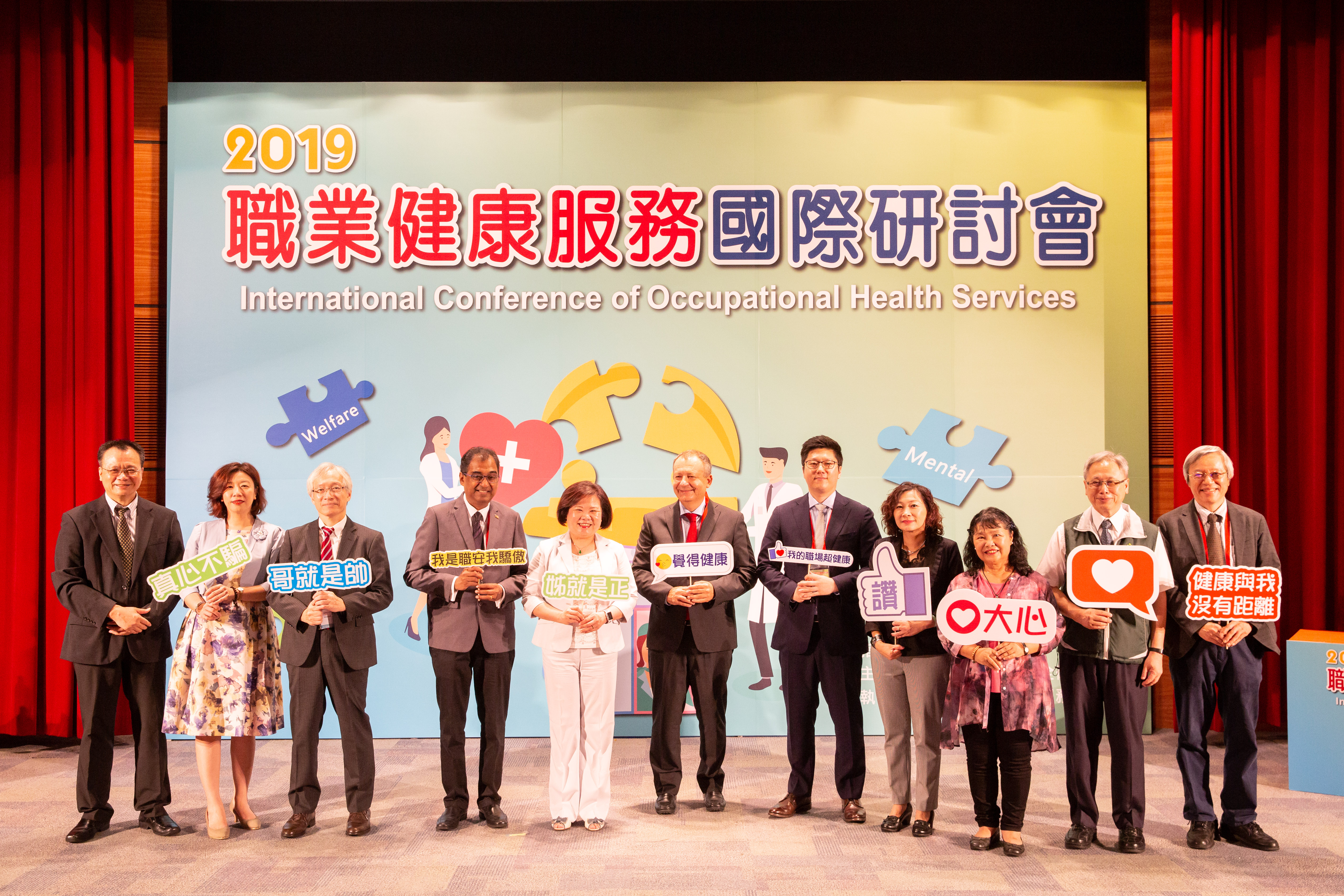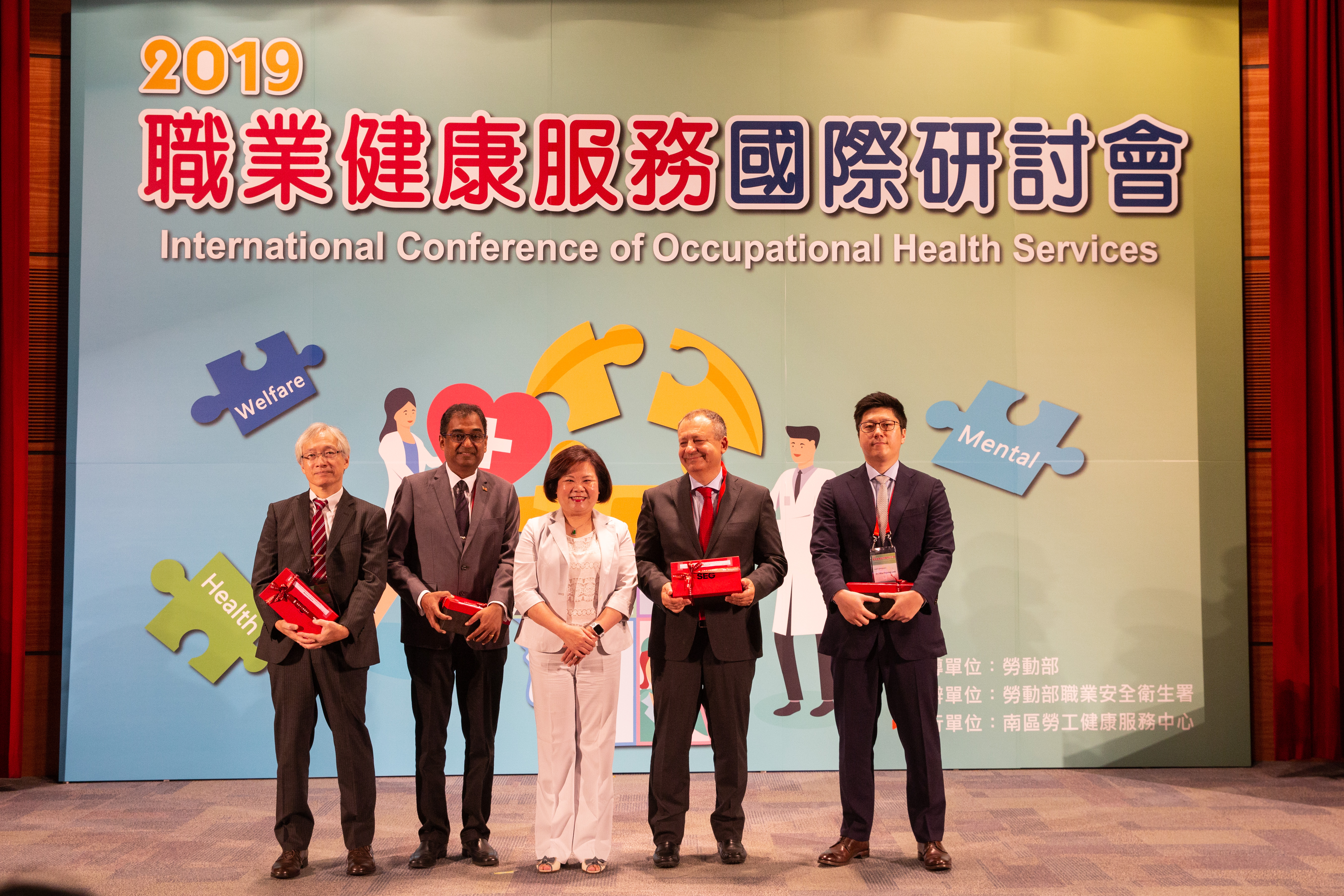“The 2019 International Conference of Occupational Health Service” was held by Occupational Safety and Health Administration (OSHA), Ministry of Labor from September 2nd to 3rd at the National Taiwan University. Experts from Italy, Japan, Korea, and Malaysia were invited to share their experiences and studies on health service in the workplace. This year the conference focused on psychological hazards as well as health services for small and medium-sized enterprises (SMEs) and dispatched workers.
In the opening speech, Ming-Chun Hsu, Minister of Labor, stated that the changes in labor organization, types and management in recent years have introduced new challenges to safety and health in the workplace. With the aging population and low birth rate protection of workers has become more and more important in Taiwan. The Minister announced that starting from 2020, subsidy amounts to SMEs with less than 199 employees will increase for hiring or contracting medical professionals to provide health service in the workplace. In the meantime, she called on companies to work with the government to reduce the risk in the workplace and construct a labor-friendly environment, which may be beneficial for the sustainable development of industry.
The conference was kicked off with policies on workplace health protection in Taiwan. Li-Ying Hsu, Director of Planning and Occupational Health Division, reviewed the changes in Taiwan’s labor force in recent years. The labor force participation rate in women has been increasing, while the proportion of middle and old age workers is on the rise. To protect the mental and physical health and raise the coverage of healthcare in workers, the Taiwanese government had not only amended related laws and regulations and implemented new ones but also scaled up the workplace health service and built up resources and tools year by year.
Professor Wanhyung Lee from the Department of Occupational and Environmental Medicine at Gachon University presented the history of establishing Worker’s Health Service Centers in Korea and the services these Center provide. Korea shared a similar situation with Taiwan that the rates of occupational diseases and injuries were higher in SMEs, and these centers can deliver easily accessible healthcare to workers in SMEs.
Sergio Iavicoli, President of the European Academy of Occupation Health Psychology, shared the measures of preventing social and psychological hazards in the workplace in Europe and took Italy as an example to illustrate the strategies of stress management in the workplace. The European Union had set up the goals for implement the prevention of psychological risks, which have been adopted by many countries and led to significant results. More and more business establishments have plans for dealing with violence, bullying or harassment. Italy has even developed quantitative tools, which makes the evaluation of work-related psychological pressure more scientific.
In-depth discussions on the prevention of burnout were made by Professor Akizumi Tsusmi, the Chair of the Department of Public Health at Kitasato University. Japan is facing with long working hours and high rates of karoshi and suicide. Therefore, enterprises with over 50 workers were required to conduct stress check programs as the primary prevention measure to screen out workers at higher risks for early intervention. Associate Professor Jayakumar Gurusamy from Graduate School of Medicine, Perdana University in Malaysia shared prevention strategies for bullying among healthcare professionals. He suggested that we should start with the identification and description of problems from the aspects of organization and the environment. Then, instructions can be given to employees on coping with stress and bully. For victims of workplace violence, assistance and related measures should be provided.
As to domestic experts, Hung-Yi Chuang, Professor from the Kaohsiung Medical University, shared the current status of health management plans in the workplace and health checkups for workers who were exposed to special occupational hazards. Tzu-Ting Wang, President of Taiwan Occupational Health Nursing, described the role of nurses in the occupational health service system and the implementation of protection workers’ mental and physical health.
The OSHA indicated that labors in small enterprises with less than 50 employees account for over 45% of the whole labor population. To make free resources for health services available to SMEs, three Workers’ Health Service Centers have been set up in the northern, central and southern regions of Taiwan. These Centers offer guidance, consultation and assistance services to enterprises and individual workers. The interactions during this conference allowed professionals in Taiwan know more about the trends and current measures of occupational safety and health in other countries, which helps stepping up from the current foundation and further protection of the health of workers in Taiwan.





 (1)Labour Minister Ming-Chun Hsu with the speakers and experts.jpg
(1)Labour Minister Ming-Chun Hsu with the speakers and experts.jpg
 (2)Labour Minister Ming-Chun Hsu giving souvenir to the speakers.jpg
(2)Labour Minister Ming-Chun Hsu giving souvenir to the speakers.jpg